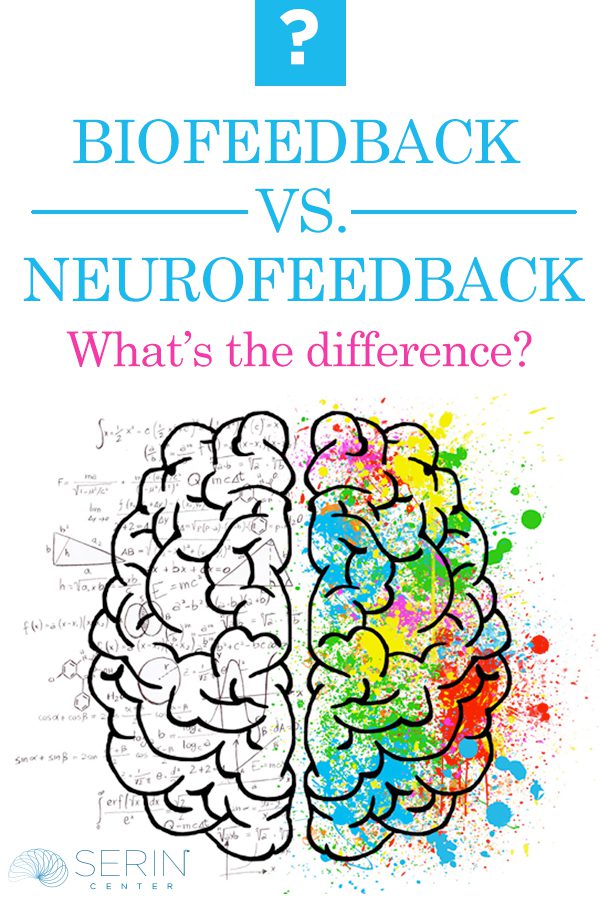The Difference Between Biofeedback and Neurofeedback
Biofeedback and neurofeedback may often be mistaken for the same intervention, but they involve different forms and processes of treatment.
Biofeedback Monitors Many Processes
During biofeedback, individuals are connected to sensors that help monitor physiological processes such as breathing, heart rate, muscle contractions, temperature, and sweat perspiration. Biofeedback provides the body with feedback about how the body is functioning, allowing individuals to make changes to improve health, hypertension chronic pain, physical performance, anxiety, or stress.
Biofeedback is limited to mostly physiological sensations; whereas neurofeedback does not involve sensors to take measurements of breathing, heart rate, etc.
Neurofeedback Monitors One Process… Your Brain!
Neurofeedback primarily focuses on electrical activity in the brain and can map activity based on regions that show activity that deviates from normative samples depending on age and gender.
Biofeedback Does Not ‘Train Your Brain’
Biofeedback does not involve training the brain in any form in regard to reading quantitative electroencephalogram (qEEG) electrical activity and providing feedback to the brain.
During neurofeedback therapy, the brain receives reinforcement through a visual stimulus presented on a screen and utilizes operant conditioning whereas biofeedback does not. Neurofeedback is a separate, non-invasive method utilizing operant conditioning to teach the brain to function more efficiently. Neurofeedback training is sub-conscious treatment, meaning that the individual does not have to actively try to focus to change their brain functioning; but they do have to perceive visual or auditory positive reinforcement on a computer screen in front of them.
Behavioral problems and ineffective brain wave activity are frequently cured or eased by localizing abnormal brain regions and teaching those regions to advance more toward “the norm.”
In contrast to biofeedback, which signals a person to change what they are doing at the moment, neurofeedback is frequently used to treat forms of psychopathology or mental disease and to improve performance.
To sum it up:
What is the difference between Biofeedback and Neurofeedback?
Biofeedback does not entail any sort of brain training, but neurofeedback focuses on the electrical activity of the brain and can map activity based on regions that show activity that deviates from normative samples based on age and gender.
Do you have additional questions about Neurofeedback and whether it is right for you? Contact us here so we can answer your questions.

Can Neurofeedback Therapy Help With Anxiety?
In a word, “Yes”! In one study, alpha training was found to increase alpha production from 64% to 78%, and anxiety scores dropped significantly.
Can Neurofeedback Help ADHD?
Neurofeedback has been found to produce a significant improvement in the core symptoms of ADHD that are equally as effective the behavioral improvements.
Can Neurofeedback Help With PTSD?
Neurofeedback therapy has resulted in rapid significant reductions in the severity of PTSD symptoms and improvements in overall cognitive functioning.
Pros and Cons, Cost, and Side Effects to Neurofeedback
Looking into neurofeedback therapy and curious what the pros, and cons are? We answer this to give you a little piece of mind.
Serin Center
If you are located in the Metro Phoenix Arizona area, Serin Center has two offices located in Peoria, AZ, and Scottsdale, AZ that can provide testing and provide Independent Educational Evaluations. Contact us today to discuss how we can help.
Our educational evaluations can provide diagnoses and generate specific goals and treatments to help your child succeed. Completed in Peoria & Scottsdale AZ
